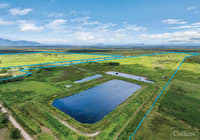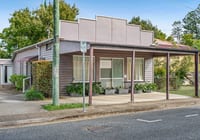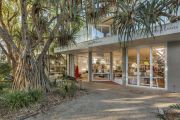
What the AUKUS deal means for the commercial real estate industry
The controversy over Australia’s commitment of up to $368 billion for the AUKUS nuclear-powered submarine program has brought into sharp relief some of the new demands now being made on some sectors of the commercial real estate industry.
In an increasingly complex geopolitical climate, with defence programs and projects having to be built at expedited speeds, companies involved will have to improve their security, innovation capabilities and international resilience to keep up.
While defence projects often comprise an intricate mix of office, industrial and residential use, increased security demands often provide an added layer of complexity.
At architecture, engineering and planning firm HDR, for instance, the fresh volume and size of defence projects – one of its specialities, alongside health, science and education – has led to it appointing an upskilled senior leadership team.
“We’ve been committed to the defence sector for over 40 years in Australia now, and back to World War II in the US,” said HDR managing principal Cate Cowlishaw. “It’s a key sector for us. We tend to focus a lot on sectors that are fully user-driven and defence fits that realm.
“We’ve now reinforced the leadership team to better be able to respond to the needs of our clients. Many of these are very complex projects, with a scale that’s changed in recent years, such as bigger defence bases with a wider range of different uses in increasingly remote locations. So, we need a lot of senior and specialised input.”
HDR is currently working in partnership with GroupGSA to design the Riverina Redevelopment Program (RRP), a $1.2 billion project that stretches across three defence establishments and delivers a variety of building types to meet the demand for recruits and trainees.
It involves major upgrades to, or replacements of, existing infrastructure and facilities in Albury-Wodonga and Wagga Wagga to enhance defence capabilities for the next 25 years. The RRP includes the military area that encompasses north, south and east Bandiana, as well as the Latchford Barracks at Wirlinga, the RAAF Base in Wagga and the Blarney Barracks at Kapooka.
There’ll be new training facilities built, new living-in accommodation and messes, new offices, new car parks and better facilities for everyone working or residing on site.
While the residential arrangements need to be on a similar level of quality that will compare favourably to homes in the private sector, and offices will have some of the same amenities as modern workplaces, the limitations are clear.
Because of security concerns, open-plan living might not be so suitable for defence bases, and offices where staff members can see everyone else and use each other’s areas might not be considered such a desirable design.
“Operational needs are a priority with defence, so functionality is fundamental,” said Cowlishaw. “There’s living accommodation and offices, all the way through to operational projects.
“There needs to be good facilities there over a long period of time and sometimes they are in quite remote locations, which drives more complexity around the procurement of the workforce and materials, and the delivery of those materials. Confidentiality and security clearance are important factors too, because of the level of engagement with the defence leadership.”
HDR is also currently developing data-driven design tools to speed up design and construction, and future-proof Australia’s defence estate. Proposed designs can now be rapidly evaluated in real time to test the specific needs of defence projects.
Stuart Aslett, the director of defence in the company’s new senior leadership team, said it was part of the design consortium to deliver the first-ever defence public-private partnership project in 2004, and key projects included the Robertson Barracks Base improvement program, and the redevelopment of the RAAF Base Tindal and the Australian Defence Force Academy.
“With this depth of experience comes a deeply nuanced understanding of the shifting challenges and complexities of the sector, and the capability to deliver base redevelopments, capability facilities and operational and training environments that can sustain military capabilities for the next decade,” Aslett said.
“We are uniquely positioned to tap into our global defence, science and technology exchange across the US, UK and Europe to deliver these kinds of programs at speed.”










